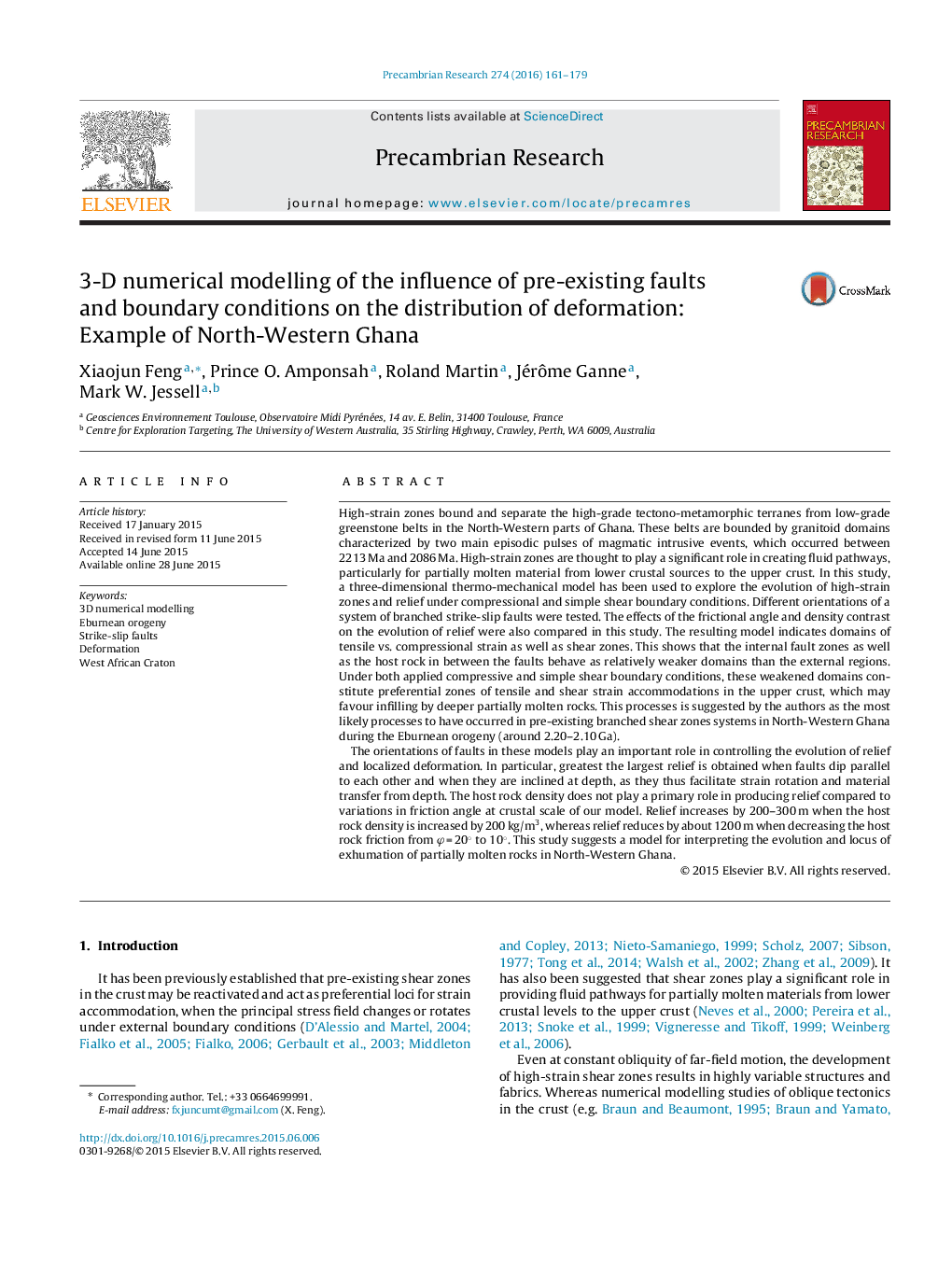| کد مقاله | کد نشریه | سال انتشار | مقاله انگلیسی | نسخه تمام متن |
|---|---|---|---|---|
| 4722505 | 1639601 | 2016 | 19 صفحه PDF | دانلود رایگان |
• We have used the Underworld code to test different orientations of a system of branched crustal scale strike-slip faults.
• The orientations of faults control the evolution of relief and localized deformation.
• We have modelled topographic evolution using three different surface boundary conditions.
• We have reconstructed the Bole-Bulenga terrane in North-Western Ghana (around 2.20–2.10 Ga).
High-strain zones bound and separate the high-grade tectono-metamorphic terranes from low-grade greenstone belts in the North-Western parts of Ghana. These belts are bounded by granitoid domains characterized by two main episodic pulses of magmatic intrusive events, which occurred between 2213 Ma and 2086 Ma. High-strain zones are thought to play a significant role in creating fluid pathways, particularly for partially molten material from lower crustal sources to the upper crust. In this study, a three-dimensional thermo-mechanical model has been used to explore the evolution of high-strain zones and relief under compressional and simple shear boundary conditions. Different orientations of a system of branched strike-slip faults were tested. The effects of the frictional angle and density contrast on the evolution of relief were also compared in this study. The resulting model indicates domains of tensile vs. compressional strain as well as shear zones. This shows that the internal fault zones as well as the host rock in between the faults behave as relatively weaker domains than the external regions. Under both applied compressive and simple shear boundary conditions, these weakened domains constitute preferential zones of tensile and shear strain accommodations in the upper crust, which may favour infilling by deeper partially molten rocks. This processes is suggested by the authors as the most likely processes to have occurred in pre-existing branched shear zones systems in North-Western Ghana during the Eburnean orogeny (around 2.20–2.10 Ga).The orientations of faults in these models play an important role in controlling the evolution of relief and localized deformation. In particular, greatest the largest relief is obtained when faults dip parallel to each other and when they are inclined at depth, as they thus facilitate strain rotation and material transfer from depth. The host rock density does not play a primary role in producing relief compared to variations in friction angle at crustal scale of our model. Relief increases by 200–300 m when the host rock density is increased by 200 kg/m3, whereas relief reduces by about 1200 m when decreasing the host rock friction from φ = 20° to 10°. This study suggests a model for interpreting the evolution and locus of exhumation of partially molten rocks in North-Western Ghana.
Journal: Precambrian Research - Volume 274, March 2016, Pages 161–179
